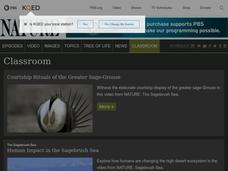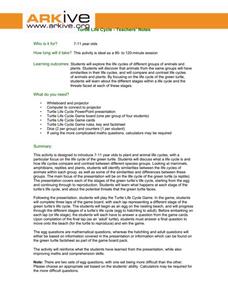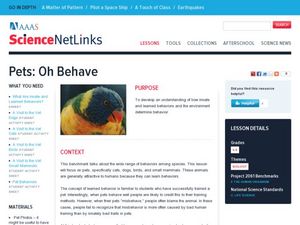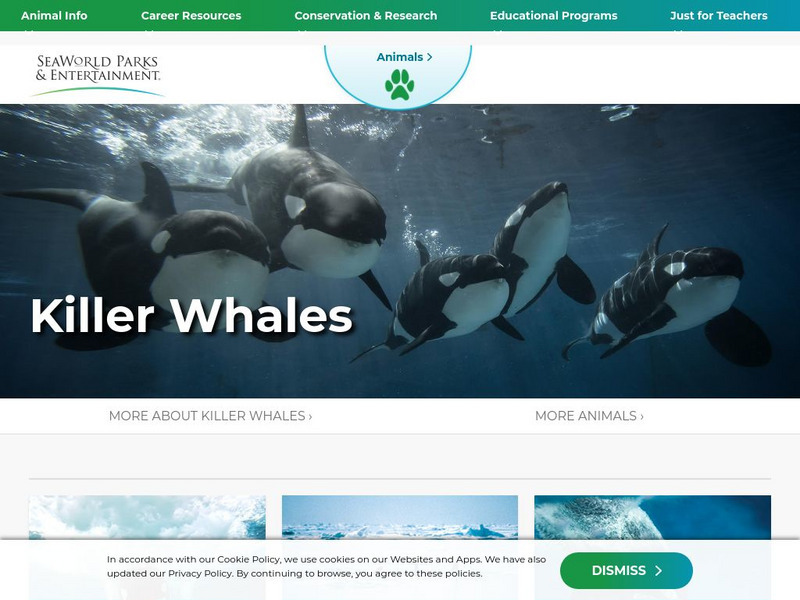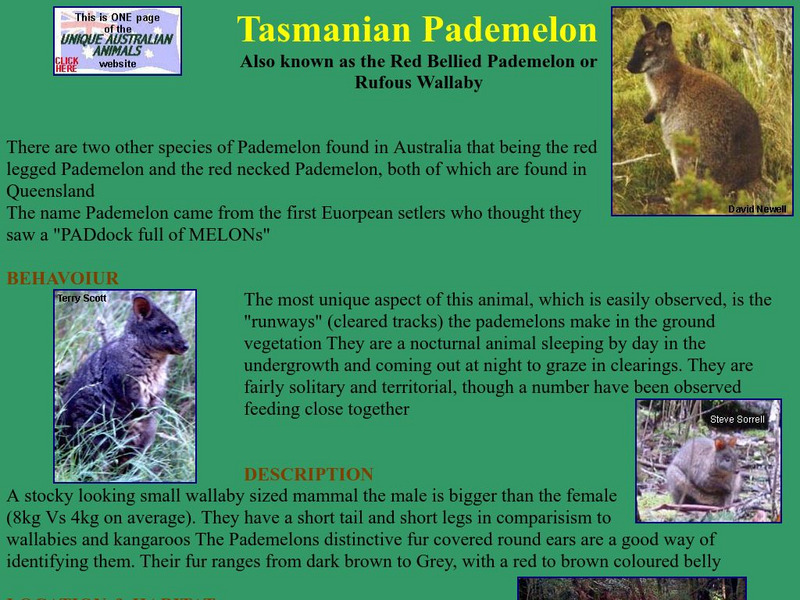Curated OER
Mammals
Learners examine the characteristics of mammals through video clips, and slide shows. Lesson includes clips of fastest land animal, biggest mammal, loudest mammal and tallest animal.
Curated OER
The Five Classes of Vertebrates
What a terrific lesson! Learners discuss the animal kingdom, and classify them as vertebrates and invertebrates. They also identify them as fish, amphibians, reptiles, birds, and mammals. There is even a taxonomic breakdown of popular...
Curated OER
Plants and Animals Crossword Puzzle
In this science worksheet, students look for the answers to the questions to fill in the crossword puzzle using the theme of pants or animals.
University of Maryland
Pollination
Sixteen ounces of honey requires more than 1,000 bees traveling over 100,000 miles and visiting 4.5 million flowers. The presentation includes sexual reproduction in plants, the parts and functions of a flower, pollination,...
Curated OER
Mammals of the Deep Blue
Third graders study ocean mammals. They explore various websites and databases to answer questions and record answers about whales and dolphins. Finally they use the information obtained to write a report about them.
Curated OER
Characteristics of Snakes and Turtles
Students examine the characteristics of snakes and turtles and compare/contrast reptiles with mammals. They watch a video, answer discussion questions, complete information charts, conduct Internet research, and create a habitat diorama.
Curated OER
Plant Life Cycles
Follow the life cycle of a dandelion with a lab sheet for kindergartners. They learn about the order of events in a dandelion's life, then put the stages of life in order. Can they describe the life cycle of a pumpkin? For extra...
ARKive
Turtle Life Cycle
Explore the wonders of the life cycle by first focusing on the growth and development of the green turtle. The class will discuss the life cycle of different plants and animals, then turn their attention to the green turtle. They view a...
Curated OER
VERTEBRATES
Seventh graders describe the main characteristics of warm-blooded vertebrate animals. They compare and contrast the two different groups of warm-blooded vertebrate animals by looking at external, reproductive, and growth characteristics.
Curated OER
Critter Encounter Chart
Students record data found at an assigned web site. In this data collection lesson, students access an assigned web site in order to complete a data chart about animals they see. They travel to different sections of the web site to find...
Curated OER
Pets: Oh Behave
They say that a dog is a man's best friend. Why is that? Discuss with your class why people like pets and the responsibilities with owning one. They read an article about pet behavior and write a short essay comparing one of their...
Curated OER
Pets: Oh Behave
Students develop an understanding of how innate and learned behaviors and the environment determine behavior. They see how a variety of factors affects our pet's behavior-including species-specific traits, the environment, training, and...
Curated OER
Pets: Oh Behave
Students develop an understanding of how innate and learned behaviors and the environment determine behavior.
American Museum of Natural History
American Museum of Natural History: Exhibition: Extreme Mammals
Learn about the body structure, habitat, reproduction, movement, and evolution of extreme mammals, both extinct and living, through interative animation and short videos.
A-Z Animals
A Z Animals: Animal Facts: Sabre Toothed Tiger (Smilodon Populator)
Provides images and a fact card about the sabre-toothed tiger, a prehistoric animal. Discusses where they lived, when and how they likely became extinct, what we know about its physical characteristics, diet, and reproduction.
National Geographic Kids
National Geographic Kids: Animals: Bottlenose Dolphin
Use this resource to find information on Bottlenose Dolphins.
National Geographic Kids
National Geographic Kids: Animals: Giant Panda
Students doing research projects on panda bears. Can find many resources such as facts, images, and video and audio clips.
Sea World Parks & Entertainment
Sea World: Killer Whales
Outlines the characteristics of the killer whale, including classification, habitat, behaviors, and conservation. Helps students identify with whales with a list of "Books for Young Readers." Information at a level of upper intermediate...
Sea World Parks & Entertainment
Sea World: Harbor Seals
Outlines the characteristics of the harbor seal, including classification, habitat, behaviors, and conservation. Helps students identify with seals with a list of "Books for Young Readers." Information at a level of upper intermediate or...
Enchanted Learning
Enchanted Learning: Polar Bears
Learn more about the polar bear when you visit this informative site that features a diagram of the polar bear and information on its diet, habitat, anatomy, reproduction and so on.
Unique Australian Animals
Unique Australian Animals: Tasmanian Pademelon
The Tasmanian Pademelon, one of Australia's marsupial mammals, is described and illustrated.
Unique Australian Animals
Unique Australian Animals: Sugar Glider
Sugar Glider, scientifically called Petaurus breviceps, is a small arboreal gliding possum, and a type of marsupial mammal.
Unique Australian Animals
Unique Australian Animals: Tasmanian Devil
The Tasmanian devil is a real Australian marsupial mammal and nothing like the cartoon character as you will find out in this illustrated article.
Unique Australian Animals
Unique Australian Animals: Platypus
The duck-billed platypus of eastern Australia is one of two mammals that bear their young in eggs. This illustrated article features many facts and photographs about this intriguing animal.







